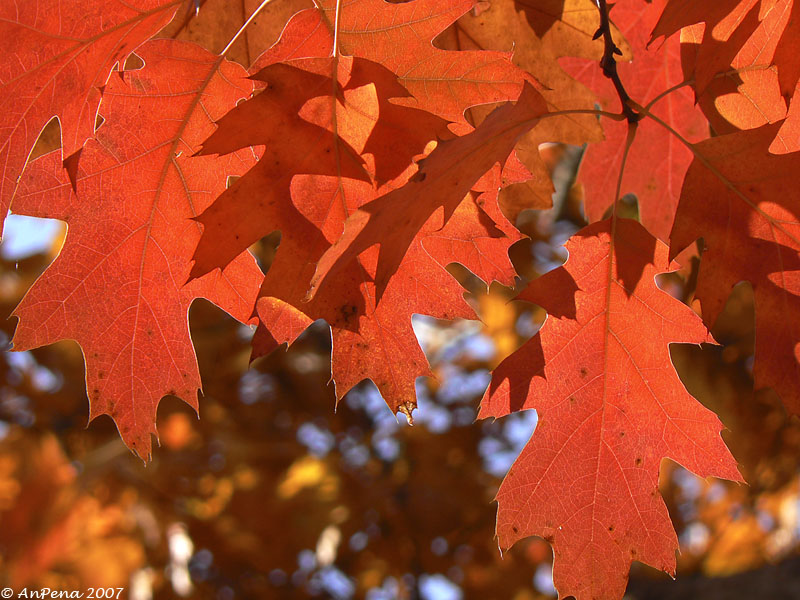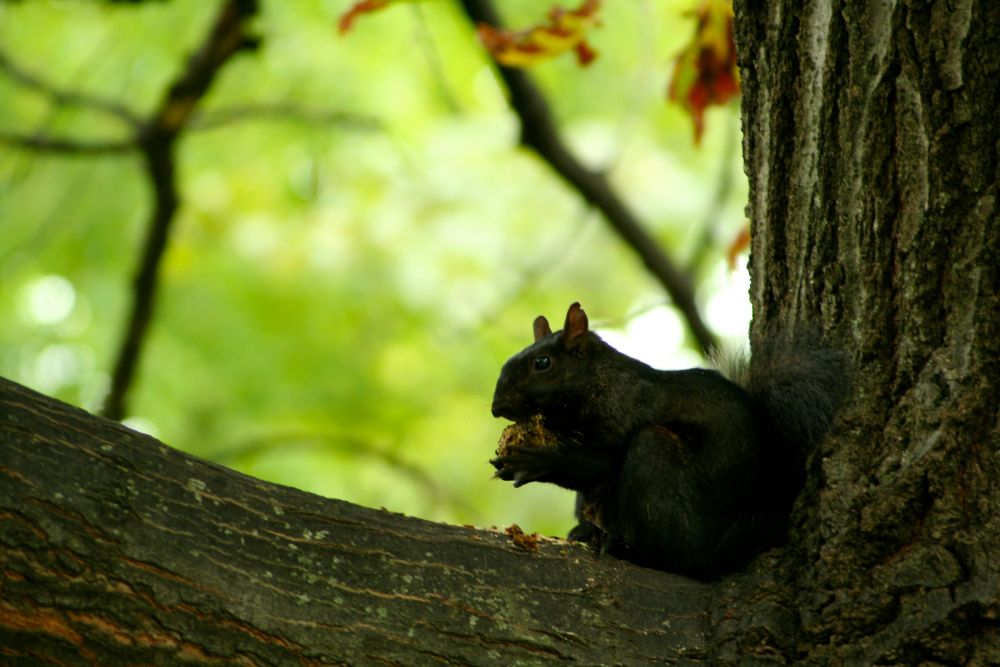The common name, red oak, refers to its fall colour as well as its red petioles and reddish interior wood. The fall colour is a big reason why I love this tree so much. While it isn’t necessarily consistent every year, the foliage turns a golden-orange to russet to crimson red in the fall. In my mind, there’s nothing like the red oak red.

Another reason I love the red oak is that it has particularly strong wood and is a long-lived tree (they can live up to 500 years!). It can grow quite tall and wide, making it a great shade tree. At maturity, it can reach approximately 45 feet tall and 35 feet wide. Plus, it grows faster than some other, more slow-growing oaks when planted in appropriate conditions and provided with the right care.

The acorns make an excellent food source for wildlife, including squirrels and blue jays (as well as many other birds and mammals). I once tried to find an acorn to plant and I couldn’t find a single intact acorn on the ground! The squirrels and birds had gotten them all. As for humans eating the acorns, they are edible, but only in small quantities, as their tannins make them quite bitter. To make them more palatable, the acorns were traditionally left in flowing water for several days to draw out the toxic tannins. Alternatively, the kernels were buried over winter or were boiled in water with wood ash to improve their edibility. I have yet to try one myself, but it’s good to know if you get stranded in the woods (and can find some acorns that the squirrels have missed!).

If you want to identify a red oak tree, I will give you the first tree identification tip I ever received (it is still my favourite). There are two groups of oaks: red/black and white. The leaves in the white group have rounded lobes: think white angels with their round haloes and gentle clouds. Red oaks have pointed lobes like the red devil with his pointed pitch fork and horns (but the red oak is not evil, I swear!). Compared with the pin oak (Quercus palustris), another member of the red group, the lobes of the red oak leaves not as deep. Another cool thing about the leaves is that they occasionally stay on the tree during the winter, providing a bit of a winter privacy screen.

While the red oak is native to the Toronto area (as are all of the trees LEAF plants), it is a popular urban tree around the world. It was introduced into Europe in 1724 and now grows wild in many European forests. It is interesting to think of our native species spreading to other regions. Lucky for us, it is native here!
Red oak requires full sun to grow well and it prefers sandy-loam soils, so this tree might not be suitable for all backyards - but that’s where arborists at LEAF can help! If you think a red oak might be the right tree for you, check out our Backyard Tree Planting Program.
The Backyard Tree Planting Program is supported by Ontario Power Generation, York Region, City of Markham, Town of Ajax, Durham Region, Toronto and Region Conservation, and Toronto Hydro.
Michael Marcucci is an arborist with LEAF.
